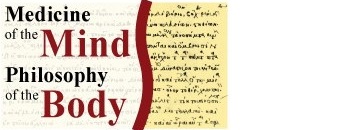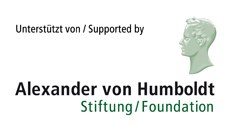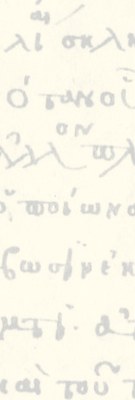Towards a Galen in English (Cambridge Galen Translations)
The importance of Galen’s works
The works of Galen of Pergamum (129–c. 215 CE), ‘the Prince of Physicians’, constitute one of the most impressive monuments of Graeco-Roman medicine. They comprise all areas of medical theory and practice, ranging from anatomy, physiology, pathology, diagnosis and prognosis, dietetics and regimen in health, therapeutics, pharmacology and surgery, gynaecology, embryology and theory of reproduction to psychiatry and ethics. In addition, they cover philosophical and methodological aspects fundamental to the acquisition, systematization and communication of medical knowledge, such as logic, terminology, epistemology, philosophy of nature and theory of causation. And however voluminous and wide-ranging, they are bound together by an intrinsic and coherent (if eclectic) comprehensive theory of the human body, the human psyche, their place within the natural world, the nature of medical knowledge and the technical and ethical components of medical expertise.
Galen’s works were of enormous influence on the subsequent history of medicine and science, both in the West and in the East, and Galen’s authority remained powerful until well into the seventeenth century and, in some respects, beyond that. Yet, more recently, Galen’s works have also found strong resonance beyond the domain of medical history. Galen was, after all, not only a brilliant doctor and prolific writer but also the court physician of several Roman Emperors, a keen public debater and dissector and an active participant in social and cultural life, first in Pergamum and subsequently in Rome. It is therefore not surprising that Galen’s work commands a rapidly growing interest from classicists, ancient historians and students of Greek and Roman literature, philosophy and society; and his writings are being exploited as a rich source for the social, cultural and intellectual history of the early Imperial period.
Yet Galen’s works are difficult to access. Many are available only in old editions that do not meet current standards of classical scholarship, such as the nineteenth century edition by Carl Gottlob Kühn (Greek text with Latin translation), which is still the most recent edition aspiring to completeness but which is universally regarded as unsatisfactory. Moreover, in spite of its title Opera omnia, it lacks a number of Galenic works preserved in fragments, or in Latin or Arabic adaptation (such as his commentary on, and his summary of, Plato’s Timaeus) or deemed lost but later discovered (such as the recently found Avoiding Distress). For only a limited number of Galenic texts have the basic modern philological requirements of a critical edition with translation and commentary been fulfilled; and although Galenic scholarship of the last decades has seen significant improvement, it is still the case that large parts of Galen’s work are not available in English translation. While interest in Galen thus seems greater than ever before, the language skills required to read him in the original are becoming more and more scarce.
The purpose, format and setup of the project
The Cambridge Galen Translations series aims to address this need. The purpose of the series is to provide a co-ordinated series of scholarly English translations of works of Galen in a uniform format consisting of introduction, translation, explicative notes, glossaries and indices. The series has been planned in close co-ordination with other ongoing Galen projects, such as the volumes published in the Corpus Medicorum Graecorum (CMG) at the Berlin-Brandenburg Academy of Sciences, the Galen volumes in the Budé series published by Les Belles Lettres (Paris), and those in the Loeb Classical Library published by Harvard University Press, in order to minimize duplication and, where possible, to promote international collaboration. Indeed, the texts translated in the volumes published so far, and those to be included in the volumes to follow, are based on critical editions that have been published, or are being prepared for publication, in the CMG, or Les Belles Lettres, or by other publishers.
Yet the novelty of the project lies not only in its provision of English translations. It also aims to make a new contribution to international Galenic scholarship, especially through substantial introductions, notes and glossaries, which are intended to provide resources for the study of Galenic thought and language, and indeed for Greek medical terminology at large. In this regard, the format of the series is closely modelled on Richard Sorabji’s Ancient Commentators on Aristotle (now published by Bloomsbury), from which it has drawn much of its inspiration, and on the CUP series of translations of Proclus’ Commentary on Plato’s Timaeus. Moreover, the project is meant to open up Galen’s work to other disciplines beyond Classics and History of Medicine, such as Philosophy, the History and Philosophy of Science, Cultural History, Linguistics and Literary Studies, and to readers with a medical background.
Galen’s work is vast, and the series therefore, in the first instance, gives priority to works that have not yet been translated into English (or indeed in any modern language), or to works for which an English translation exists which, however, is out of print, or in need of revision or replacement in the light of recent developments in Galenic scholarship. A further consideration in the planning of the series has been the interest of the texts to be included and their relevance to some of the major issues that Galen’s work raises.
Thus the works included in the series so far are important witnesses to Galen’s views on the relationship between body and soul, on mental health and well-being and on the psychological management and treatment of human emotions (Psychological Writings); on the nature of human beings, its diagnosis and management (Mixtures); on the preservation of health and the promotion of a healthy style of living (Writings on Health); on Plato’s Timaeus and its relevance to medical theory and practice (Writings on Plato’s Timaeus); on the nature and method of medical prognosis and prediction (Commentary on Hippocrates’ Prognostic); on the Hippocratic theory of the physical composition of the human body (Commentary on Hippocrates’ The Nature of the Human Being); on the theory and therapeutic practice of pharmacology (Simple Drugs I-V); on the structure and purposive arrangement of the human body and its components (The Function of the Parts of the Human Body); and on his detailed understanding and use of the pulse as a diagnostic indicator (The Distinct Types of Pulse, The Discernment of the Pulse). These works also provide insight in the ways in which Galen arrived at his views and tried to justify them, how he accommodated and appropriated the various intellectual traditions, both medical and philosophical, to which he was indebted, and how successful he was in his attempts to create a synthesis out of these often conflicting tendencies. Furthermore, they give a lively picture of the social and cultural environment in which Galen lived and how it impinged on the formation and development of his ideas; and finally, they are illuminating for Galen’s activities as a writer and communicator, for the ways in which he presented his ideas, the consistency of his terminology, the audiences for whom he wrote, the genres he used to disseminate his ideas and the rhetorical strategies he employed in order to persuade his readers and to distinguish himself from rival doctors, with whom he was in constant competition.
Volumes in the series
Psychological Writings, ed. P. N. Singer, translated with introductions and notes by Daniel Davies, Vivian Nutton and P.N. Singer, with the collaboration of Piero Tassinari, Cambridge 2013
This volume includes the first English translation of the recently discovered ‘counselling’ work Avoiding Distress, the characterological work Character Traits (preserved in Arabic only) as well as the two key works of Galenic psychology: Diagnosis and Treatment of the Affections of the Soul, which draws strongly on Stoic doctrines of the emotions, and That the Capacities of the Soul follow the Mixtures of the Body, which argues for the Galenic thesis of the dependence of soul, character and cognition on the states of the body, drawing on Plato, Aristotle and Hippocrates.
Works on Human Nature, Vol. 1: Mixtures (De temperamentis), translated with introduction and notes by P. N. Singer and Philip J. van der Eijk, with the assistance of Piero Tassinari, Cambridge 2018
Mixtures is a work of central importance for Galen’s views on the human body. It presents his influential typology of the human organism according to nine mixtures, or ‘temperaments’, of hot, cold, dry and wet. It also develops Galen’s ideal of the ‘well-tempered’ person, whose perfect balance ensures excellent performance both physically and psychologically.
Mixtures teaches the aspiring doctor how to assess the patient’s mixture by training one’s sense of touch and by a sophisticated use of diagnostic indicators. It presents a therapeutic regime based on the interaction between foods, drinks, drugs and the body’s mixture.
Mixtures is a work of natural philosophy as well as medicine. It acknowledges Aristotle’s profound influence. It engages with Hippocratic ideas on health and nutrition, and with Stoic, Pneumatist and Peripatetic physics.
Mixtures appears here in a new translation, with generous annotation, introduction and glossaries elucidating the argument and setting the work in its intellectual context.
Writings on Health: Thrasybulus, On Health (De sanitate tuenda), translated with introduction and notes by P. N. Singer, Cambridge 2023
Galen's Health (De sanitate tuenda) was the most important work on daily exercise, diet and health regimes in antiquity. This book presents the first reliable scholarly translation of this work in English, alongside the related theoretical work Thrasybulus. A substantial introduction and detailed annotation elucidate both works and contextualize them within the framework of ancient health practices, ancient conceptions of the body and debates between medical and philosophical schools. The texts are of enormous interest from three points of view: (1) the wide range of insights they give into ancient everyday lifestyles, especially as regards diet, bathing, exercise and materia medica, as well as aspects of daily intellectual life; (2) the light they shed on ancient debates within medicine and philosophy, on fundamental conceptions of the body and the relationship between body and mind; (3) the enormous influence that Health had in mediaeval and early modern times.
Writings on Plato’s Timaeus, translated with introduction and notes by Aileen Das, Pauline Koetschet and Mark Schiefsky
The texts translated in this volume are of central importance for Galen’s engagement with Plato’s Timaeus. To Galen, Plato was the great authority in philosophy, as was Hippocrates in medicine. Yet Galen felt that Plato had important things to say on health, disease and the human body as well. The Timaeus was of enormous significance to Galen’s thought on the body’s structure and functioning, the anatomical and physiological embedding of the three parts of the soul in the brain, the heart and the liver, and on vital activities such as nutrition and respiration. More generally, the Timaeus was a key source of inspiration for Galen’s teleological world view, in which the idea of cosmic design by a personified creative Nature, the Craftsman, plays a fundamental role. The two texts translated here testify in great detail to his understanding and use of the dialogue. The Compendium is preserved in a medieval Arabic version and an apparent preface in an Arabo-Latin adaptation, and as such it played a major part in the wider reception of the Timaeus in the Islamicate world. The Commentary on the Medical Statements in the Timaeus survives only in fragments, some in Greek, some in Arabic. They are translated here into English for the first time; and for the Commentary, the collection of material included in this volume presents the results of a new analysis and assessment of the fragmentary evidence.
Commentary on Hippocrates’ Prognostic, translated with introduction and notes by Christine F. Salazar and P. N. Singer
Works on Human Nature, Vol. 2: Commentary on Hippocrates’ On the Nature of the Human Being, translated with introduction and notes by R. J. Hankinson
Simple Medicines I-V, translated with introduction and notes by John Wilkins
The Function of the Parts of the Human Body, translated by M. T. May, revised with introduction and notes by Julius Rocca


